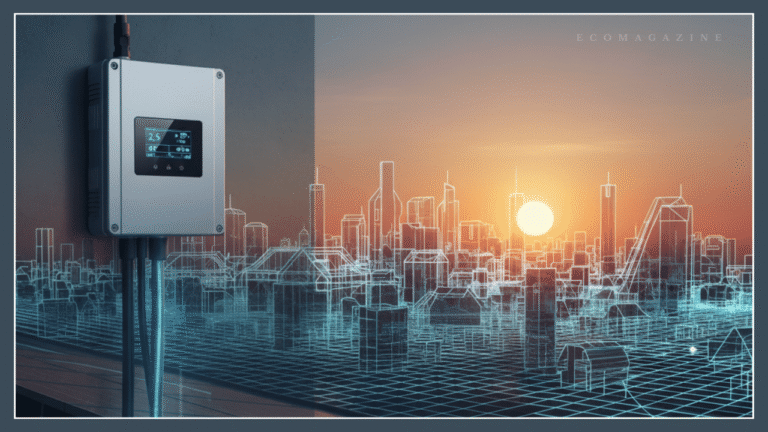Solar power systems have become a cornerstone of modern energy solutions, but the true intelligence behind every efficient system lies in its inverter. Traditional inverters have long been responsible for converting direct current (DC) from solar panels into alternating current (AC) for household and industrial use. Yet, as energy demands grow more complex, conversion alone isn’t enough.
Smart inverter chargers, also known as hybrid inverters, are transforming the way solar systems operate. These advanced devices integrate MPPT (Maximum Power Point Tracking) control, battery management, and grid interaction, making them the true brains of today’s solar setups.
The Evolution of Inverters: From Traditional to Smart
Early solar installations relied on traditional inverters that performed a single function, converting DC to AC power. To manage solar input effectively, these systems required an additional MPPT charge controller, which added complexity, cost, and maintenance.
However, hybrid inverter chargers changed the game. They combine multiple roles, DC-to-AC conversion, MPPT tracking, and battery charging, into one compact, efficient unit.
With this all-in-one design, hybrid inverters seamlessly handle solar, battery, and grid power, delivering unmatched efficiency and energy stability for homes and businesses alike.
Learn more about EPEVER’s solar inverter charger, designed to bring intelligent energy management to every solar installation.
Traditional vs. Smart Inverters: What’s the Difference?
| Feature | Traditional Inverters | Smart / Hybrid Inverter Chargers |
| Function | Converts DC to AC only | Converts DC to AC + manages MPPT + charges batteries |
| Solar Input Control | Requires external MPPT controller | Built-in MPPT function |
| Setup Type | Common in off-grid or basic systems | Ideal for hybrid (solar + grid + battery) systems |
| Backup Power | None | Seamless switch to battery during outages |
| Energy Optimization | Limited | Automated, intelligent energy management |
Simply put, hybrid inverters not only generate power, they manage it, optimize it, and keep it flowing even when the grid fails.
How Smart Inverters Enhance Solar Efficiency
1. Built-in MPPT Function for Maximum Power Harvesting
Every solar panel’s power output fluctuates with sunlight intensity and temperature. The built-in MPPT algorithm in hybrid inverters continuously monitors these variations, adjusting voltage and current to maintain the most efficient operating point.
- Extracts maximum energy from each solar panel.
- Reduces performance loss caused by shading or heat.
- Ensures consistent power output throughout the day.
This level of optimization translates directly into higher solar yield and faster ROI for system owners.
2. Intelligent Energy Management
Smart inverters intelligently direct energy between solar panels, batteries, and the grid.
- During the day: Solar energy powers loads and charges batteries.
- At night or during outages: The inverter automatically switches to stored battery energy.
- When the grid is active: It can export surplus power back for credit or stabilize local energy demand.
This intelligent switching minimizes wastage and maximizes self-consumption, allowing homeowners and small businesses to get the most from every kilowatt of solar energy produced.
3. Real-Time Monitoring and Communication
Today’s smart solar inverters are equipped with advanced communication options like RS485, WiFi, or Bluetooth, enabling remote monitoring and management through mobile apps or desktop platforms.
Users can:
- Track energy generation, consumption, and storage in real-time.
- Diagnose performance issues remotely.
- Fine-tune settings for improved efficiency.
Explore EPEVER’s on grid inverter series, built with intelligent connectivity and monitoring features for precision control.
Ensuring Grid Stability and Backup Power
Beyond solar efficiency, hybrid inverters ensure grid stability and reliable power backup.
- They synchronize seamlessly with grid systems.
- Export excess solar energy when available.
- Instantly switch to battery backup during power interruptions.
With UPS-grade transfer times, they guarantee uninterrupted power for critical loads, whether it’s a home office, commercial facility, or industrial setup.
Practical Benefits of Smart Inverters
- Higher Solar Utilization: Maximize every ray of sunlight through integrated MPPT.
- Reduced Equipment Cost: One unit replaces multiple devices (inverter + controller).
- Simplified Setup: Fewer components mean faster installation and easier maintenance.
- Future-Ready: Built-in support for IoT monitoring and energy management systems ensures scalability.
These advantages make hybrid inverters not just a technology upgrade, but a strategic investment in sustainable energy independence.
Conclusion
In today’s evolving energy landscape, efficiency is no longer just about converting power, it’s about optimizing it.
Smart inverter chargers combine advanced MPPT tracking, intelligent energy management, and reliable backup capabilities, making them essential for any high-performance solar system.
From rooftop panels to the grid connection, they ensure every watt counts, delivering cleaner, smarter, and more reliable energy.
Discover how EPEVER’s Hybrid Inverters can help you build a more efficient, future-ready solar system at EPEVER.


